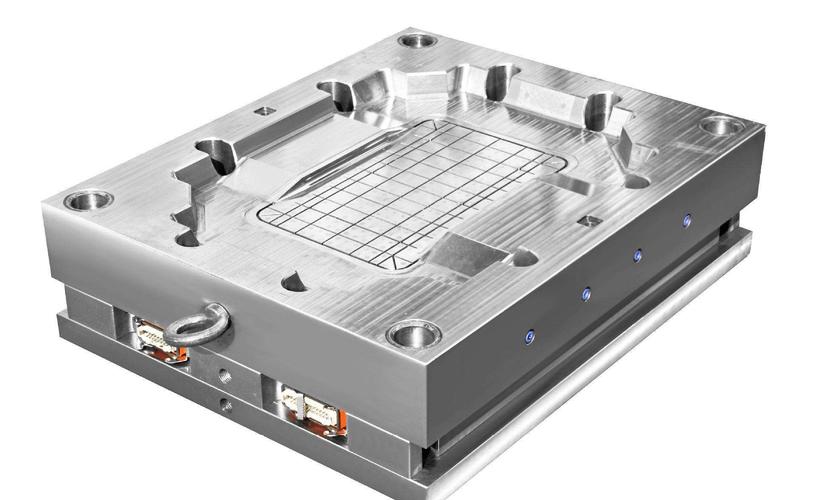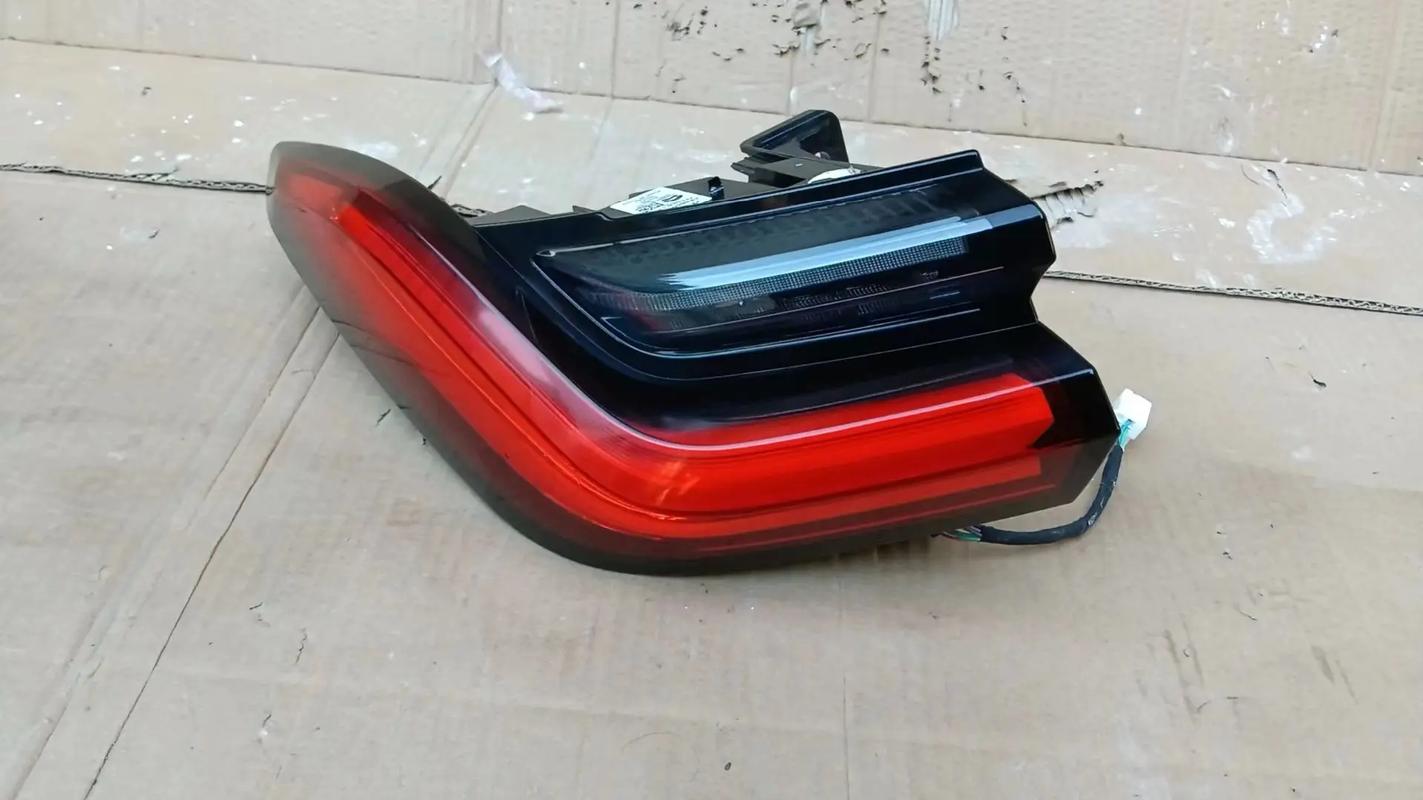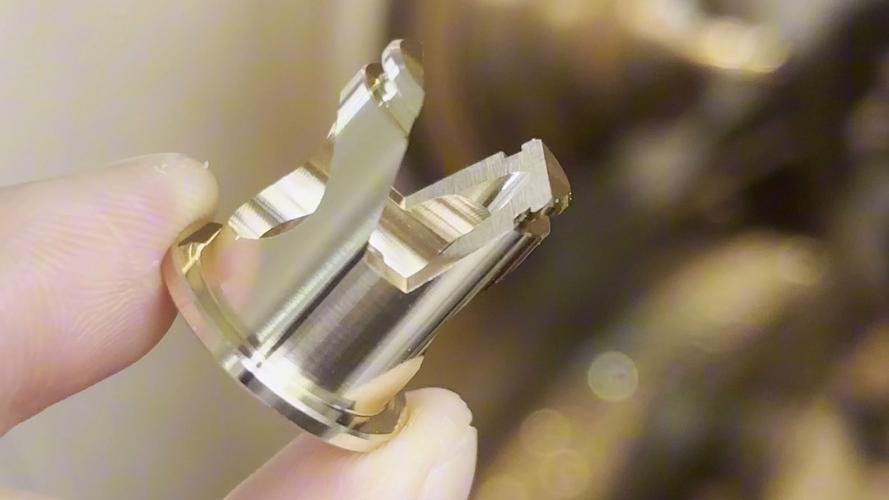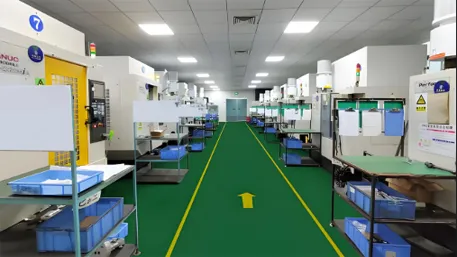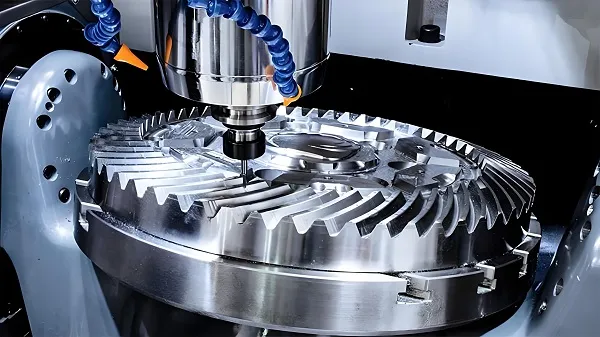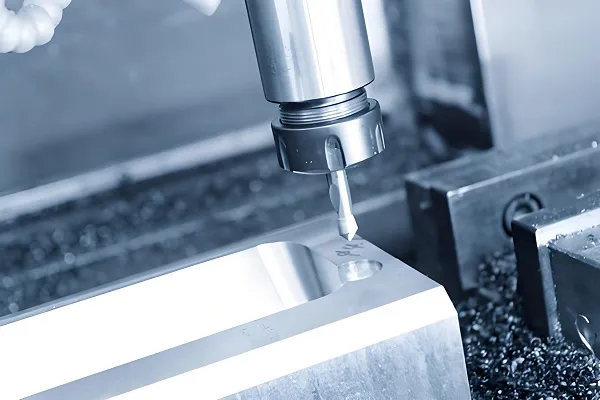In the intricate network of piping systems across numerous industries, the need for components that can efficiently manage fluid flow transitions is paramount. Custom CNC (Computer Numerical Control) stainless steel reducing pipes have emerged as the ideal solution for applications demanding precise dimensional control, exceptional corrosion resistance, and reliable performance. Leveraging cutting – edge CNC technology, these reducing pipes are manufactured to meet the exacting standards of diverse sectors, ensuring seamless integration into complex piping setups. This article explores the technical capabilities, customization process, material selection, quality control, and industry applications of custom CNC stainless steel reducing pipes, highlighting their crucial role in modern fluid management systems.
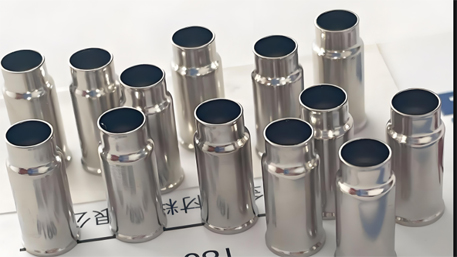
I. Technical Excellence: Redefining Reducing Pipe Precision
(A) Unmatched Dimensional Accuracy
CNC machining systems are meticulously calibrated to achieve extraordinary dimensional accuracy in the production of stainless steel reducing pipes. With positioning accuracy reaching ±0.003mm and repeat positioning accuracy of ±0.005mm, we can fabricate reducing pipes with extremely tight tolerances. When manufacturing reducing pipes for high – pressure fluid transfer in the petrochemical industry, for instance, the diameters at both ends, the length of the transition section, and the wall thickness can be maintained within ±0.003mm. This precision ensures a smooth transition of fluid flow, minimizing turbulence and pressure loss, and enhancing the overall efficiency of the piping system.
(B) Complex Geometry Machining
Five – axis CNC machining technology enables the creation of stainless steel reducing pipes with complex geometries. Whether it’s pipes with gradual conical transitions, eccentric reducing profiles for specific space constraints, or reducing pipes with integrated flanges and grooves for enhanced sealing, the five – axis system can execute these designs with remarkable precision. Compared to traditional machining methods, which often struggle to produce intricate and consistent transition shapes, five – axis CNC machining reduces errors from ±0.015mm to within ±0.005mm. Moreover, it significantly boosts production efficiency, allowing for the rapid manufacturing of custom reducing pipes in various sizes and configurations, meeting the diverse needs of different projects promptly.
(C) Advanced Surface Finishing and Treatment
The production of custom CNC stainless steel reducing pipes involves advanced surface finishing and treatment processes optimized through CNC control. Stainless steel, while inherently corrosion – resistant, can benefit from additional surface enhancements. CNC – controlled polishing processes can create a smooth inner and outer surface finish, reducing fluid friction and preventing debris accumulation. In applications exposed to harsh environments, such as marine or chemical processing, CNC – monitored electroplating or passivation processes can be applied. Electroplating with a layer of nickel or chromium can further enhance corrosion resistance, while passivation helps to remove surface contaminants and improve the material’s natural protective oxide layer, extending the service life of the reducing pipes and ensuring long – term reliable performance.
II. End – to – End Customization: Tailoring Reducing Pipes to Your Specific Needs
(A) In – Depth Requirement Analysis and Design Conceptualization
When you approach us with your reducing pipe requirements, our experienced engineering team engages in detailed discussions to understand your application, performance expectations, and design preferences. We consider factors such as the type of fluid or gas being transported, operating pressure and temperature, flow rate requirements, installation space limitations, and connection types. Using state – of – the – art CAD/CAM software, we generate multiple design concepts. We then collaborate closely with you, refining the designs until they perfectly align with your vision. Whether you need a standard reducing pipe with a unique modification or a completely new design for a specialized project, we have the expertise to bring your ideas to life.
(B) Strategic Material Selection and Cost Analysis
Based on the finalized design, we recommend the most suitable stainless steel alloys for your custom reducing pipes. Different stainless steel alloys offer varying combinations of corrosion resistance, strength, and cost – effectiveness. For general – purpose applications with moderate corrosion exposure, 304 stainless steel is a popular choice due to its good balance of properties and affordability. It has a tensile strength of ≥515 MPa and can handle a wide range of fluid types. In more corrosive or high – temperature environments, 316 stainless steel, which contains molybdenum for enhanced corrosion resistance, is often preferred. It can withstand exposure to harsh chemicals and high – chloride environments, with a tensile strength of ≥485 MPa. For applications requiring high – temperature resistance and excellent creep properties, 321 stainless steel, stabilized with titanium, is an ideal option. Simultaneously, we conduct a detailed cost analysis, factoring in material costs, machining complexity, and production volume, to provide you with a transparent and competitive quote.
(C) Precision Manufacturing and Order Tracking
Once you approve the design and quote, production commences. You can monitor the progress of your order in real – time through our dedicated online tracking platform. Our skilled technicians follow strict manufacturing standards, using advanced CNC turning, milling, and shaping machines to produce reducing pipes that meet the highest quality benchmarks. We keep you informed at every stage of the production process, from raw material procurement to the final inspection, ensuring complete transparency and peace of mind throughout the manufacturing journey.
(D) Rigorous Quality Assurance and Timely Delivery
After production, each custom stainless steel reducing pipe undergoes a rigorous quality inspection. Only pipes that meet our exacting standards are shipped to you. We perform dimensional inspections using coordinate measuring machines (CMMs) to ensure that all critical dimensions, including the diameters at both ends, the length of the transition section, and the wall thickness, are within ±0.003mm. Surface finish quality is carefully examined to ensure smoothness and cleanliness, which is crucial for fluid flow efficiency. In addition, we conduct pressure testing and hydrostatic testing to validate the structural integrity and sealing performance of the reducing pipes under various operating conditions. We also offer comprehensive after – sales support, addressing any concerns you may have during the product’s lifecycle.
III. Strategic Material Selection: Choosing the Right Stainless Steel Alloy for Optimal Performance
(A) 304 Stainless Steel
304 stainless steel, also known as 18 – 8 stainless steel due to its approximate 18% chromium and 8% nickel content, is one of the most commonly used alloys for reducing pipes. It offers excellent corrosion resistance in normal atmospheric conditions, as well as resistance to many chemicals and solvents. Its good formability and weldability make it suitable for a wide range of manufacturing processes, allowing for the creation of complex reducing pipe geometries. With a relatively low cost compared to some other stainless steel alloys, 304 stainless steel is an ideal choice for applications in industries such as food and beverage processing, general industrial piping, and HVAC systems, where moderate corrosion resistance and reliable performance are required.
(B) 316 Stainless Steel
316 stainless steel, often referred to as marine – grade stainless steel, is renowned for its superior corrosion resistance, especially in chloride – rich environments such as seawater and chemical processing plants. The addition of molybdenum (around 2 – 3%) to the alloy composition enhances its ability to withstand pitting and crevice corrosion. It also offers better resistance to high – temperature oxidation compared to 304 stainless steel. With a higher level of durability and performance, 316 stainless steel is commonly used in applications such as offshore oil and gas platforms, chemical refineries, and marine vessels, where exposure to harsh and corrosive conditions is frequent.
(C) 321 Stainless Steel
321 stainless steel contains titanium, which stabilizes the alloy and provides excellent resistance to intergranular corrosion, particularly at elevated temperatures. This makes it suitable for applications where the reducing pipes will be exposed to high – temperature environments, such as in power generation plants, automotive exhaust systems, and industrial furnaces. While it offers good corrosion resistance and high – temperature strength, 321 stainless steel is typically more expensive than 304 and 316 stainless steels, so it is selected based on the specific requirements of high – temperature and corrosion – resistant applications.
IV. Stringent Quality Control: Ensuring Top – Tier Reducing Pipe Quality
(A) Raw Material Inspection
All incoming raw materials for custom stainless steel reducing pipes are subject to strict quality checks. We use spectroscopic analysis to verify the chemical composition of the stainless steel alloys, ensuring that they meet the required standards. For example, when using 316 stainless steel, we confirm that the chromium, nickel, and molybdenum contents are within the specified ranges. Additionally, hardness testing, tensile testing, and microstructure analysis are performed to ensure the material’s integrity and suitability for the intended application.
(B) In – Process Monitoring
Throughout the manufacturing process, we employ statistical process control (SPC) techniques to monitor key manufacturing parameters. Regular sampling and data collection help us identify and correct any potential issues promptly. We monitor parameters such as cutting speeds, feed rates, tool wear, and the temperature during heat – treatment processes (if applicable). If any parameter deviates from the set values, we can adjust the process in real – time to ensure consistent product quality, maintaining the precision and reliability of each reducing pipe.
(C) Final Product Validation
Before shipping, each reducing pipe undergoes a comprehensive inspection. We use CMMs to verify dimensional accuracy, ensuring that all critical dimensions are within ±0.003mm. Surface finish quality is carefully inspected to ensure it meets the required standards for smoothness and cleanliness, which is essential for minimizing fluid resistance. Pressure testing is conducted by subjecting the pipe to a specified pressure and monitoring for any pressure drops, indicating potential leaks or structural weaknesses. Hydrostatic testing is also performed to ensure the pipe can withstand the expected operating pressures without failure. Only reducing pipes that pass all these tests are considered ready for delivery.
V. Diverse Industry Applications: Transforming Piping System Efficiency
(A) Oil and Gas Industry
In the oil and gas industry, where pipelines transport highly valuable and often hazardous substances over long distances and under varying pressures, custom CNC stainless steel reducing pipes play a vital role. They are used to connect pipes of different diameters, facilitating the smooth transition of oil, gas, and associated fluids. The high – precision and corrosion – resistant properties of these reducing pipes, especially when made from alloys like 316 stainless steel, ensure reliable operation in harsh offshore environments, refineries, and pipeline networks. They help maintain the integrity of the piping system, prevent leaks, and optimize fluid flow, contributing to the efficient extraction, transportation, and processing of oil and gas resources.
(B) Chemical Processing Industry
The chemical processing industry deals with a wide range of corrosive chemicals and high – temperature, high – pressure operations. Custom stainless steel reducing pipes are essential components for safely and efficiently transporting chemicals between different processing units. 316 stainless steel reducing pipes, with their enhanced corrosion resistance, are commonly used to handle aggressive chemicals and prevent contamination. The precise dimensions and smooth flow transitions provided by CNC – machined reducing pipes ensure consistent chemical flow rates, minimize the risk of blockages, and enhance the overall productivity and safety of chemical processing plants.
(C) Food and Beverage Industry
In the food and beverage industry, hygiene and product purity are of utmost importance. Custom CNC stainless steel reducing pipes, typically made from 304 stainless steel, are used to connect various parts of the production and packaging lines. The smooth surface finish and corrosion – resistant properties of these reducing pipes prevent the buildup of bacteria and contaminants, ensuring the integrity of food and beverage products. They also provide a reliable and leak – free connection, maintaining the quality and safety standards required in this industry.
(D) Pharmaceutical Industry
The pharmaceutical industry requires piping systems that meet the highest standards of cleanliness and sterility. Custom stainless steel reducing pipes are used to transport pharmaceutical fluids, such as drugs, solvents, and cleaning agents, throughout the production facilities. The precision manufacturing capabilities of CNC technology, combined with the corrosion – resistant properties of stainless steel, ensure that these reducing pipes do not contaminate the products. They can withstand the rigorous cleaning and sterilization processes required in the pharmaceutical sector, maintaining the integrity of the piping system and the quality of the final pharmaceutical products.
VI. Frequently Asked Questions (FAQ)
(A) What is the typical precision of custom CNC stainless steel reducing pipes?
Our CNC machining can achieve a dimensional tolerance of ±0.003mm, ensuring a precise fit and seamless flow transition in your piping systems.
(B) How do I choose the right stainless steel alloy for my reducing pipes?
The choice depends on your application’s specific requirements, such as the level of corrosion exposure, operating temperature, pressure, and budget. Our experts can assess your needs and recommend the most suitable alloy to meet your performance and cost expectations.
(C) What is the lead time for custom reducing pipes?
Lead times vary depending on the complexity of the design and order quantity. Simple designs can be completed in 3 – 5 days, while more complex ones may take 7 – 10 days. Rush orders are available upon request.
(D) Can CNC machining handle custom reducing pipe designs with complex geometries?
Yes, our five – axis CNC machines are capable of fabricating reducing pipes with a wide variety of complex geometries, including gradual transitions, eccentric profiles, and integrated features, to meet even the most demanding design requirements.
(E) How much does it cost to customize stainless steel reducing pipes?
Costs are determined by factors such as material, design complexity, precision requirements, and production volume. While small – batch customization may be relatively costly, economies of scale can significantly reduce per – unit costs for larger orders.
VII. Customer Testimonials
An oil and gas exploration company approached us to develop custom 316 stainless steel reducing pipes for their offshore pipeline network. Our team utilized advanced CNC machining and material selection techniques to create reducing pipes that met the strict industry standards. The new reducing pipes not only provided a seamless connection between different pipe diameters but also withstood the harsh marine environment and high – pressure conditions, reducing maintenance costs and ensuring the continuous operation of the pipeline network. The company was highly satisfied with the performance and quality of the custom reducing pipes.
A pharmaceutical manufacturer needed custom reducing pipes for their new production facility’s piping system. We designed and manufactured 304 stainless steel reducing pipes with a smooth, polished surface finish to meet the strict hygiene requirements of the industry. The precision – engineered reducing pipes provided a reliable and leak – free connection, ensuring the purity of pharmaceutical fluids during production and transportation. The customer reported a significant reduction in the risk of contamination and an increase in the overall efficiency of their production processes.
Reach Out Now for Your Custom CNC Stainless Steel Reducing Pipes!
Regardless of your industry or application, our team of experts is ready to collaborate with you. We offer a seamless end – to – end service, from design to delivery. Contact us today to discuss your project requirements and take the first step towards getting top – quality custom CNC stainless steel reducing pipes that will enhance the efficiency and reliability of your piping systems.

